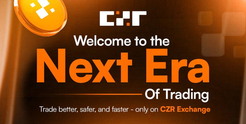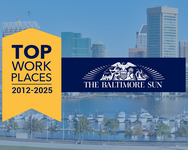The stringent safety measures implemented by the governments in response to the COVID-19 pandemic urged employers to adapt their work arrangements to ensure business continuity and prioritize employee safety. This positioned remote work into the mainstream. According to a 2020 survey, 62% of the labor force in the United States worked remotely to some extent. This transition presented numerous challenges, from employers being forced to immediately adapt their operational structures and invest in remote communication technologies to employees needing to deal with blurred work-life boundaries.
Despite these challenges, many believe that the advantages of remote work outweigh the cons. Several studies indicate that a significant number of American workers prefer to adopt remote or hybrid work models even after pandemic-related regulations are eased. According to a survey by Gartner, Inc., 74 percent of companies surveyed expect some of their employees to continue working remotely after the pandemic ends.
These developments initiate discussions surrounding the potential permanence of remote work in the post-pandemic era. Contributing to the narrative is the fact that remote work becoming more mainstream has helped people with disabilities find and maintain employment. Over five million individuals with disabilities were employed in September 2022, underlining a significant 500,000 jump from the previous year.
Adriane Lee Schwartz, the founder of Style Search & Consulting, LLC, draws from her extensive experience and expertise to challenge the assumptions regarding remote and in-office work preferences. Schwartz provides a fresh perspective, proposing that not all employees desire a work-from-home setup. She argues that while some thrive in remote environments, a significant segment of the workforce yearns for traditional office spaces' collaborative and stimulating atmosphere.
The seasoned consultant highlights the misconception that most employees seek remote work in an attempt to evade responsibilities or slack off. Schwartz stated, "As an employee advocate, I've encountered numerous people who prefer the camaraderie and productivity of an office environment. They prefer this setup because they believe being physically present fosters a collaborative spirit. It brings value to organizational dynamics."
Consequently, Schwartz acknowledges the increasing workforce segment that prefers working remotely for various reasons, such as flexibility, better work-life balance, or the need to accommodate personal situations. However, it is worth underscoring that this preference does not fit all roles or industries. Schwartz noted, "While remote work suits some positions, it might not align seamlessly with others." In other words, it is significant to understand that a one-size-fits-all approach to remote work is not viable, given that certain occupations and industries require in-person collaboration to achieve optimal productivity and innovation.
Schwartz champions the notion that employers must adopt flexible models to cater to employees' varying needs. These models encompass hybrid arrangements that allow for a blend of remote and in-person work or role-specific policies tailored to ensure both productivity and employee satisfaction. Schwartz also emphasizes companies’ pivotal role in effectively managing remote workers. "Before bringing people on board, the management must strategize how to navigate this work arrangement to avoid lapses," she commented.
The experienced recruiter cautions against the blind adoption of remote work culture. Citing an instance where remote work backfired for her clients, she shared, "The work-from-home setup has hurt many of my clients. In particular, I've had two of them experience somebody taking a job with them and agreeing to work remotely. But that individual ended up working two full-time jobs." Such situations can negatively impact businesses’ overall performance and productivity.
Schwartz's insights illustrate the complexities that come with the shifting trends in work arrangements across industries. Remote work offers various benefits, such as reduced commute stress and the opportunity for deep focus, especially for roles like design. Meanwhile, in-office work fosters collaboration, which is vital for occupations reliant on joint brainstorming sessions.
Ultimately, Adriane Lee Schwartz advocates for a balanced approach that respects individual preferences while ensuring organizational efficiency and integrity. Companies must adapt and innovate their hiring approach to attract top-tier individuals. An open-minded hiring strategy that values talent, skills, potential, and character over geographic proximity would reshape the broader industry, paving the way for growth and excellence.
Media Contact
Name: Adriane Lee Schwartz
Email: [email protected]






